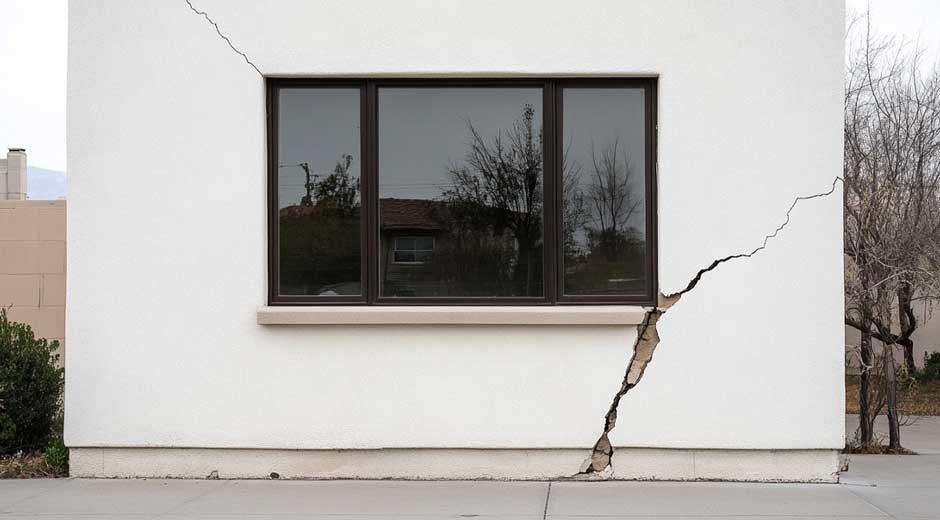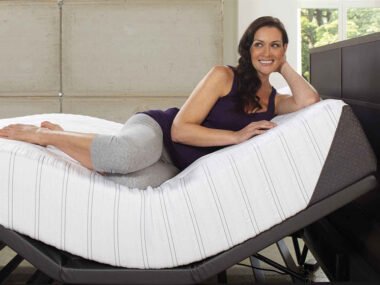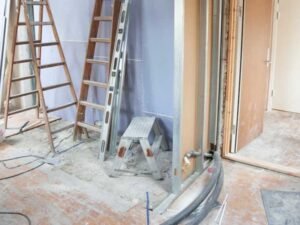Most people think stucco is just that textured finish you see on the outside of a house. And sure, that’s the part everyone notices. But what’s happening behind that exterior coat is actually way more important for keeping your home dry and structurally sound. The weather-resistant barrier sitting between your wall framing and that stucco finish? That’s doing the heavy lifting when it comes to moisture protection.
Here’s the thing about exterior walls – they’re constantly dealing with water. Rain hits them directly, humidity works its way through, and temperature changes create condensation. Without proper protection, all that moisture eventually finds its way into your wall cavity, and that’s when expensive problems start showing up. Rot, mold, structural damage – none of it happens overnight, but it all starts with inadequate moisture management.
The Critical Role of Weather-Resistant Barriers
The building paper (or weather-resistant barrier, if you want to get technical about it) creates a secondary defense line behind your stucco. Think of it as insurance for your walls. Even though stucco itself provides some water resistance, it’s not waterproof. Small cracks develop over time, water can wick through the material, and anywhere there’s a penetration for a light fixture or outlet, you’ve got a potential entry point for moisture.
That barrier layer catches water that makes it past the stucco and channels it back out before it can reach the wood framing or sheathing. Most modern building codes actually require this protection, and for good reason. Homes built without proper weather barriers or with substandard materials often end up with serious moisture damage within just a few years.
The paper needs to do two things simultaneously – block liquid water from getting deeper into the wall while still allowing water vapor to escape from inside the house. This breathability matters because homes naturally generate moisture (cooking, showering, even just breathing), and that vapor needs somewhere to go. Trap it in the wall cavity, and you’re creating perfect conditions for mold growth and wood rot.
Common Types of Building Paper Used in Stucco Applications
Traditional asphalt-saturated felt paper has been used in construction for decades. You’ll see it labeled as 15-pound or 30-pound felt, which refers to the weight per square (100 square feet). The 30-pound version offers better protection and durability, which is why it’s often specified for stucco installations. It’s affordable and readily available, but it does have limitations – it can tear during installation, and prolonged UV exposure before the stucco goes on can degrade the material.
Grade D building paper represents a step up in performance. This kraft paper gets treated with asphalt to create water resistance while maintaining good vapor permeability. It’s specifically designed for use behind stucco and meets specific building code requirements for water-resistive barriers. Many contractors prefer it because it’s easier to work with than felt and holds up better during the installation process.
Housewrap products have gained popularity over the past couple decades. These synthetic materials (usually made from spun polyethylene) offer excellent water resistance and tear strength. Brands vary in their specific properties, but most provide superior protection compared to traditional felt paper. The downside? They’re more expensive, and not all types work equally well under stucco. Some housewraps can trap moisture against the back of the stucco, leading to problems down the line.
For comprehensive information about selecting the right materials for your specific climate and home design, a detailed stucco paper guide can walk you through the technical specifications and practical considerations that impact long-term performance.
Installation Details That Make or Break Performance
Even the best weather barrier won’t do its job if it’s not installed correctly. The paper needs to overlap properly – typically 6 inches at horizontal seams and 4 inches at vertical seams. The lapping direction matters too. Each upper layer should overlap the layer below it, creating a shingling effect that directs water downward and outward, away from the wall.
Around windows and doors, things get more complicated. These penetrations need special attention because they’re prime spots for water intrusion. The building paper should be integrated with flashing at the top and sides of openings, and it needs to be detailed carefully at the sill to prevent water from getting trapped.
The number of layers also varies depending on your climate and local building codes. Some areas require two layers of weather-resistant barrier under stucco, especially in regions with heavy rainfall or high wind-driven rain. That second layer provides redundancy – if water gets past the first layer, you’ve still got protection.
What Happens When Moisture Protection Fails
This is where it gets expensive. Water damage behind stucco doesn’t announce itself right away. By the time you see staining on interior walls or notice a musty smell, the problem has usually been developing for months or years. The wood framing might be rotted, insulation could be soaked and moldy, and electrical systems might be compromised.
Fixing these issues means removing the stucco to access the damage, replacing rotted framing members, treating mold, installing new weather barriers properly, and then re-applying stucco. Depending on how widespread the damage is, you could be looking at tens of thousands of dollars in repairs. And insurance often won’t cover it if the damage resulted from improper installation or maintenance neglect.
Some warning signs to watch for include cracks in the stucco (especially horizontal cracks or cracks near windows), soft spots when you press on the wall, paint peeling on interior walls near exterior corners, and visible water stains. If you notice any of these, it’s worth having a professional evaluate what’s happening behind the surface.
Climate Considerations for Material Selection
Where you live should influence which weather barrier makes the most sense for your home. Coastal areas with salt air need materials that resist corrosion and degradation from constant humidity. Desert climates with intense UV exposure require barriers that won’t break down from sun exposure before and after installation. Cold climates with freeze-thaw cycles demand flexibility so the material doesn’t crack when temperatures swing.
Heavy rainfall regions often benefit from the redundancy of two weather barrier layers. And in areas prone to wind-driven rain, the quality of the installation becomes even more critical because water gets pushed into every tiny gap and imperfection.
Making Informed Decisions About Your Stucco System
When planning a stucco installation or evaluating an existing system, understanding the moisture protection components helps you ask the right questions. Don’t just focus on the finish coat color or texture. Ask about the weather barrier being used, how many layers will be installed, and how the contractor handles details around openings and penetrations.
A quality stucco system, properly installed with appropriate weather protection, should last 50 years or more with minimal maintenance. But cut corners on the barrier layer, and you might be dealing with problems before you’ve even paid off your home improvement loan. The few hundred dollars saved on cheaper materials or rushed installation gets erased pretty quickly when you’re tearing everything off to fix moisture damage.
The reality is that stucco has gotten a bad reputation in some areas specifically because of moisture problems – but almost always, those problems trace back to inadequate or improperly installed weather barriers rather than issues with the stucco itself. Get the foundation right, and stucco remains one of the most durable and attractive exterior finishes available.










